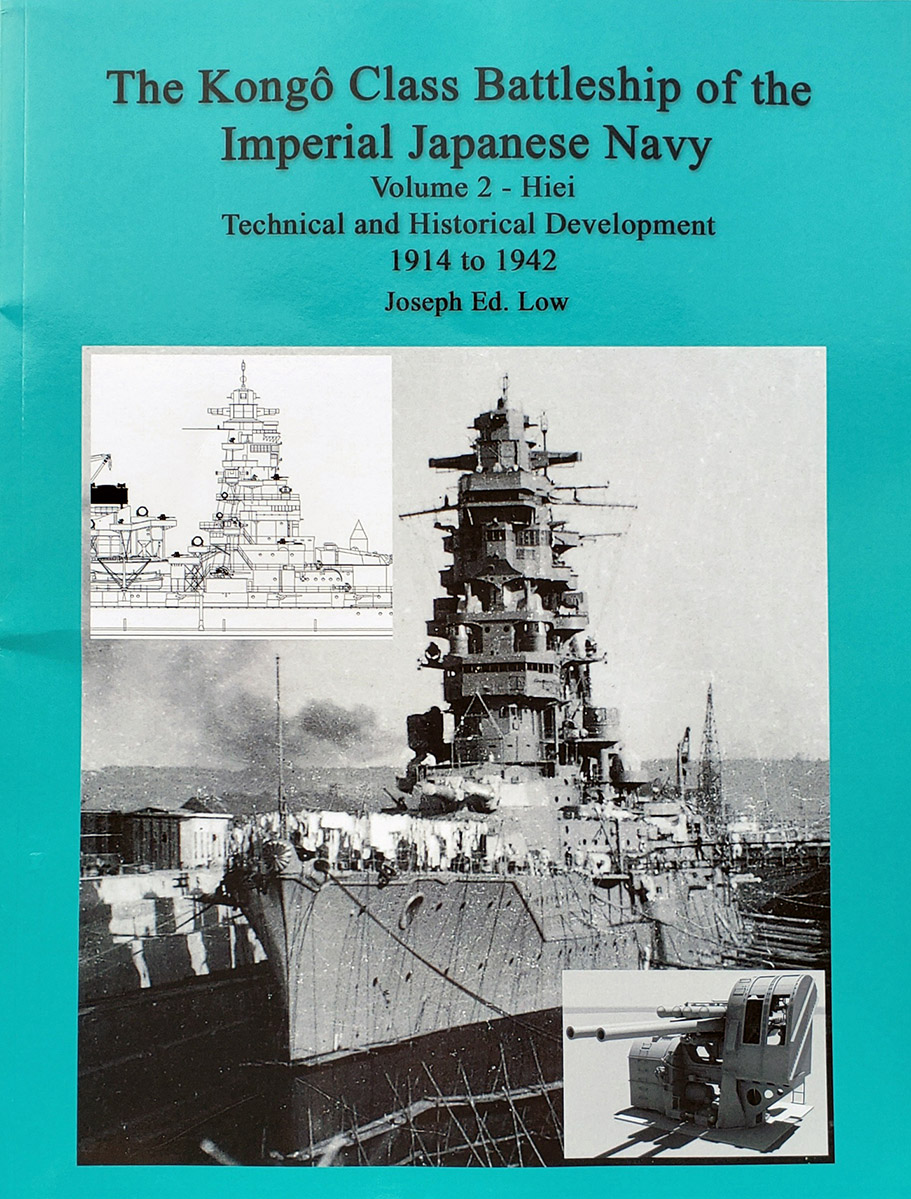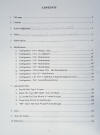Technical and Historical Development 1914 to 1942
by Dr Joseph Ed Low, with Sander Kingsepp

Technical and Historical Development 1914 to 1942
by Dr Joseph Ed Low, with Sander Kingsepp

| Reviewed
by Dan Kaplan
June 2022 |
|||||||||
|
Background
Hiei was the second of four Kongo-class battleships built by Japan in the years immediately preceding World War I. Originally laid down as a fast, heavily armed battlecruiser, she underwent a series of small and large improvements over time. However, to help comply with the terms of the Washington Naval Disarmament Treaty, she alone among Japanís battlefleet was demilitarized in the early 1930s. She was then further modified to serve as Emperor Hirohitoís transport and fleet review vessel. After Japan withdrew from all the disarmament treaties, Hiei was reconstructed as a fast battleship between 1937 Ė 1940. Her unique, revised bridge superstructure served as a prototype for the tower bridges of the succeeding Yamato class battleships. She was among the most active of Japanís capital ships during the early years of World War II. During the first year, she participated in the attack on Pearl Harbor, the invasion of the Dutch East Indies, the Indian Ocean Raid, the Battle of Midway, and some of the initial battles off Guadalcanal. Hiei was sunk during the First Naval Battle of Guadalcanal on November 13, 1942. She was in company of sister Kirishima and a Japanese battle group enroute to bombard Henderson Field on Guadalcanal Island when they ran into a force of USN cruisers and destroyers. Hiei became the focus of most of the American fire, and, after incurring more hits from air attacks the following day, eventually succumbed to accumulated battle damage. She was the first Japanese battleship sunk in the war. Author Dr. Joseph Ed Low and contributor Sander Kingsepp have diverse professional backgrounds and are military/naval historians with a longstanding interest in the Imperial Japanese Navy. Dr. Low possesses one of the largest, known collections of reference material on the IJN and is highly proficient in creating digital illustrations and technical drawings. Mr. Kingsepp is an experienced translator who has contributed widely to many publications relating to the IJN and the Pacific War. Both are avid contributors to the Combined Fleet and related websites, and both have collaborated on various books and documentaries on IJN related material. |
|||||||||
| The Book
(Disclaimer: I am personally acquainted with both Dr. Low and Mr. Kingsepp, but have no stake in this endeavor.) This is the second book in the series on the Kongo-class ships. The book is a large format paperback, 8.5 x 11 inches, and 134 pages long. Itís the same format as the Kirishima book, but with slightly larger fonts that make it a little easier to read. The focus of the book is also a little different from that of the Kirishima volume. This volume concentrates on the eleven major and minor modifications that Hiei underwent throughout her lifetime. This is certainly the first book to attempt to document all of her changes, some of which had been previously undocumented. It does so with a combination of photographs, highly detailed drawings (particularly of the changes to her bridge superstructure), captioning, tables, and external profile views. Another section focuses on her antiaircraft fit throughout the years. Photos and 3D three-point renderings serve to highlight this section. Unlike the Kirishima book, there is no TROM (Tabulated Record of Movement). The book ends with several appendices, a truly extensive bibliography, and footnote listing. |
click to
enlarge images |
||||||||
 |
|||||||||
|
|||||||||
| Final Thoughts:
Itís meticulously researched and wonderfully illustrated. The attention paid to all the specific fits and configurations is clearly a first for Hiei. For a model builder like myself who dwells on details, it's a fantastic reference. I love the level of detail thatís included, and the photos used to highlight certain areas. I do miss the extensive TROM that came with the Kirishima book (which has to be one of the most complete, and maybe the best, TROM that I've ever seen) as well as some of the 3-point perspective views of the superstructure. On the other hand, I wish the Kirishima book had some more of the area specific keys and illustrations that's been included here. But, I certainly understand that time and effort often mean something has to give. The bookís emphasis is different, and in some ways better, than the Kirishima book. Much like the Kirishima volume, itís the best single volume reference on Hiei that I know of in English. Highly recommended. Review sample courtesy of my wallet, via
Amazon.com.
Price is US$29.99.
|
|||||||||
